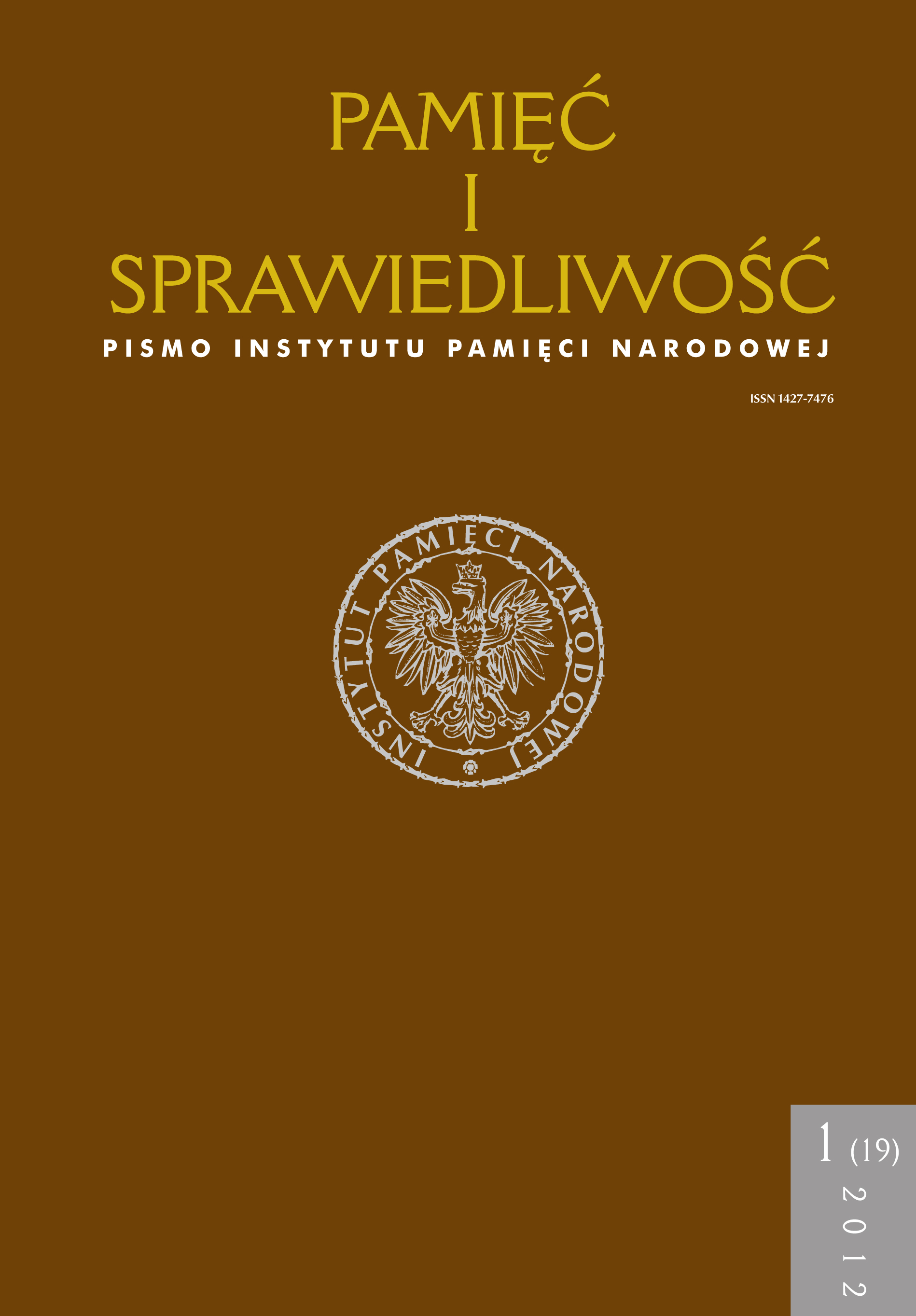Żołnierze-górnicy z powiatów elbląskiego i braniewskiego (1949–1959)
Pamięć i Sprawiedliwość, Tom 19 Nr 1 (2012), strony: 269-283
Data publikacji: 2012-06-30
Abstrakt
Bibliografia
M. Maruszczyk, M. Paździora, Obozy jenieckie w górnictwie węglowym Górnego Śląska w latach 1945–1949 [w:] Obozy pracy przymusowej na Górnym Śląsku, red. A. Topol, Katowice 1994, s. 27-50. S. Rosenbaum, B. Tracz, Obozy pracy przymusowej Gliwickiego Zjednoczenia Przemysłu Węglowego 1945–1949, Katowice 2009. E. Nalepa, Wojskowe bataliony górnicze w Polsce w latach 1949–1959, „Przegląd Historyczny” 1994, t. 85, z. 1–2, Z. Wojdalski, Wojskowy Korpus Górniczy, „Dzieje Najnowsze” 1983 (3), Rocznik XV, W. Gąsiorowski, Żołnierze z kilofami. Monografia Żołnierzy-Górników Okręgu Płockiego, Sierpc 2001. P. Piotrowski, Bataliony budowlane i górnicze w Wojsku Polskim [w:] Studia i materiały z dziejów opozycji i oporu społecznego, t. 2, red. Ł. Kamiński, Wrocław 1999, s. 125. R. Klementowski, W cieniu sudeckiego uranu. Kopalnictwo uranu w Polsce w latach 1948–1973, Wrocław 2010. P. Piotrowski, Śląski Okręg Wojskowy. Przekształcenia organizacyjne 1945–1956, Warszawa 2003, P. Piątek, Wybrane zagadnienia odpowiedzialności karnej za zbrodnie przeciwko ludzkości określone w art. 3 ustawy o IPN, „Pamięć i Sprawiedliwość” 2004, nr 2
Inne teksty tego samego autora
- Dariusz Burczyk, „Bojownicy ludu” z Nowego Portu , Pamięć i Sprawiedliwość: Tom 21 Nr 1 (2013)
 Język Polski
Język Polski
 English
English
 Deutsch
Deutsch
 Français (France)
Français (France)
 Italiano
Italiano
 Русский
Русский


 PDF
PDF
